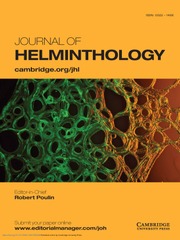No CrossRef data available.
Article contents
Identification, sequence analysis, and expression profiles of Decapentaplegic (Dpp), a bone morphogenetic protein (BMP) in Fasciola gigantica
Published online by Cambridge University Press: 19 September 2025
Abstract
Bone Morphogenetic Proteins (BMPs) are a highly conserved family of proteins involved in a variety of biological processes and developmental pathways critical for proper growth and the maintenance of normal physiological functions in animals. However, the specific BMP-like ligand in Fasciola gigantica, a zoonotic liver fluke of major veterinary and public health importance, has not yet been clearly identified and fully characterized. In this report, we describe the molecular structure, key characteristics, evolutionary relationships, and expression patterns of F. gigantica Decapentaplegic (FgDpp), a putative member of the BMP family. The complete cDNA sequence of FgDpp was 3,765 bp in length and included a 2,811 bp coding sequence (CDS), which encodes a 936-amino-acid precursor protein. This precursor is predicted to undergo proteolytic processing to yield a 185-amino-acid mature peptide. Sequence analysis revealed two conserved domains characteristic of BMP family members: a TGF-β pro-peptide domain and a TGF-β domain containing seven conserved cysteine residues. Expression profiling across developmental stages showed that FgDpp is highly expressed in embryonated eggs and metacercariae, with minimal expression in unembryonated eggs, newly excysted juveniles (NEJs), and adult flukes. These findings contribute to the molecular characterization of FgDpp and suggest its potential involvement in early developmental regulation, offering a foundation for future functional studies and potential targets for parasite control strategies.
Keywords
Information
- Type
- Research Paper
- Information
- Copyright
- © The Author(s), 2025. Published by Cambridge University Press

